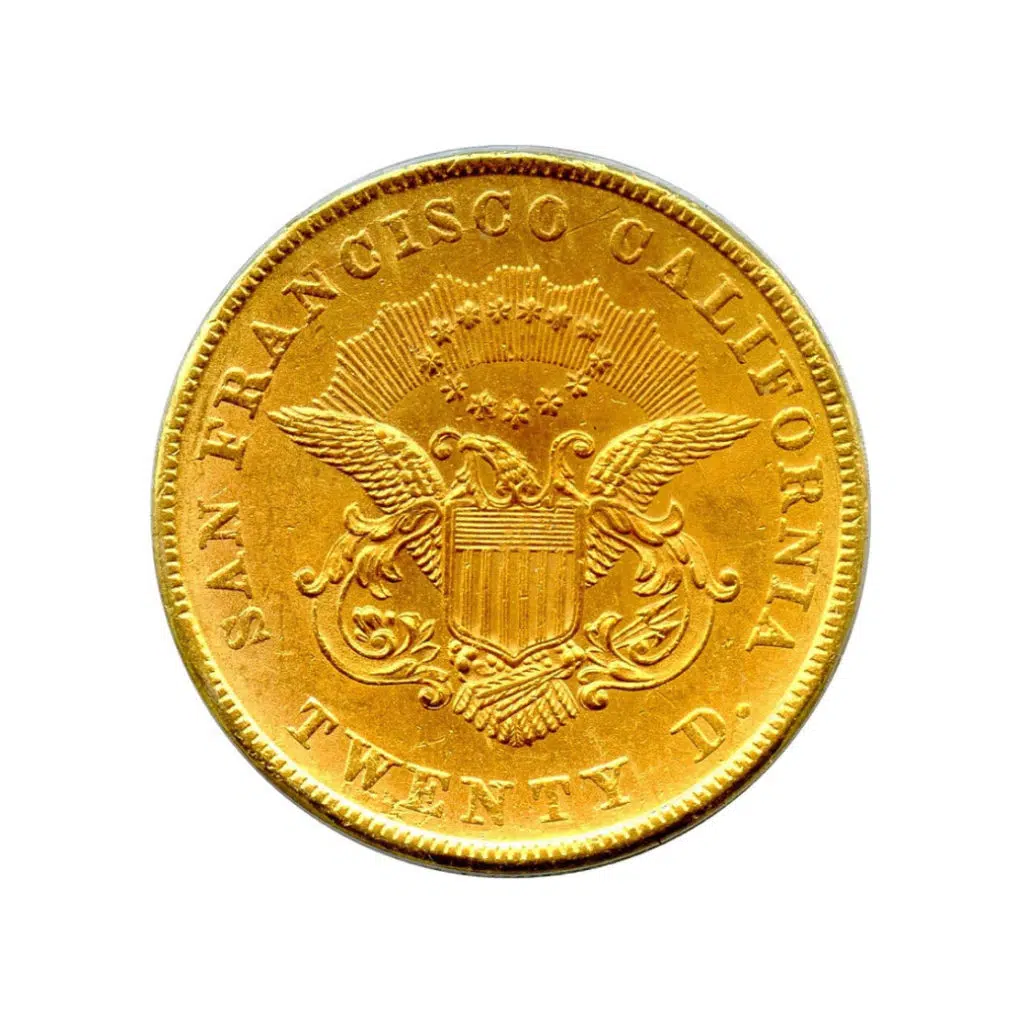1854 Kellogg $20 Coin
Born out of the heart of the California Gold Rush, the 1854 Kellogg $20 coin is a collector’s dream and a piece of American history.

The History Of The 1854 Kellogg Coin
During the early 1850s, the western region experienced significant economic expansion due to the California Gold Rush. Despite the abundant flow of gold from the mines, settlers, miners, and native Californians found the coins minted by private companies unsatisfactory. They advocated for the establishment of a state assay office, which serves to test the purity of metals and safeguard against fraud. California citizens sought a means to regulate the influx of gold into the economy.

Design & Features
This exquisite 1854 Kellogg $20 coin holds a significant place in both California and American history. With its warm honey-gold color and bronze hues in protected areas, this coin exhibits a timeless elegance. The Kellogg $20 displays uniformity and boldness throughout, with traces of mint luster visible within the intricate central elements on each side
About Kollegg Coin
Numerous southern states opposed the establishment of a California mint due to concerns over increased competition. Despite this opposition, a bill for the creation of a US Assay Office in San Francisco was passed on September 30, 1850. Initially, this office was only authorized to issue denominations ranging from $50 to $10,000. However, there was a significant demand for more practical denominations. Consequently, a deal was arranged with Moffat & Co. to produce $10 and $20 coins.
By mid-1853, circulating coinage had reached critical shortages for various political and economic reasons. Regulations implemented by the Assay Office had discredited nearly all private miners, leading even legitimate coins to face melting and exportation. In response, former lawyer John G. Kellogg and assayer G.F. Richter established a gold melting and assaying office in December 1853. Regional banks, including Wells Fargo & Co., urged the newly formed Kellogg & Richter to “fill the void” by issuing their own private coinage.
In a letter dated January 31, 1854, Kellogg responded, confirming that their private coins would be available within 10 days. Thus, on February 9, 1854, the first Kellogg $20 coins were issued. Production of the Kellogg & Co. coin continued through 1855, with Kellogg claiming that approximately $20 million worth of coins had been struck
